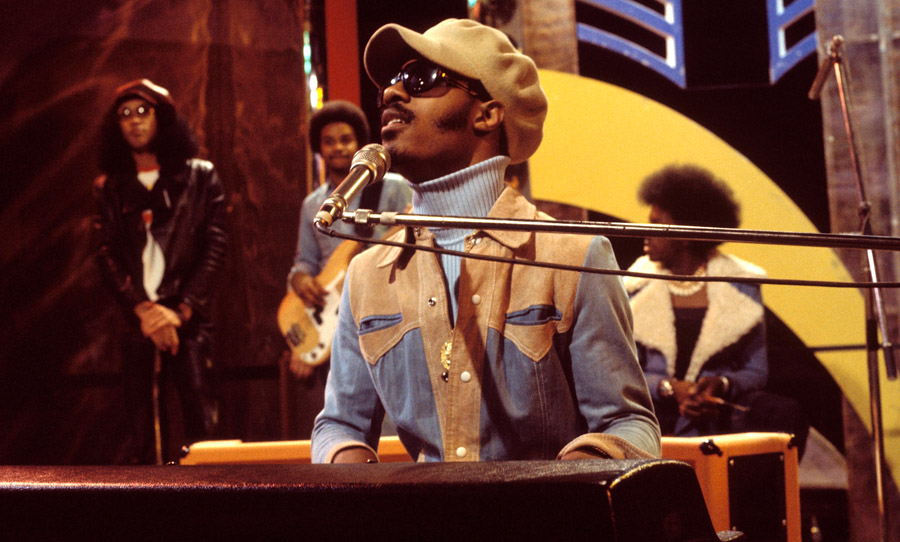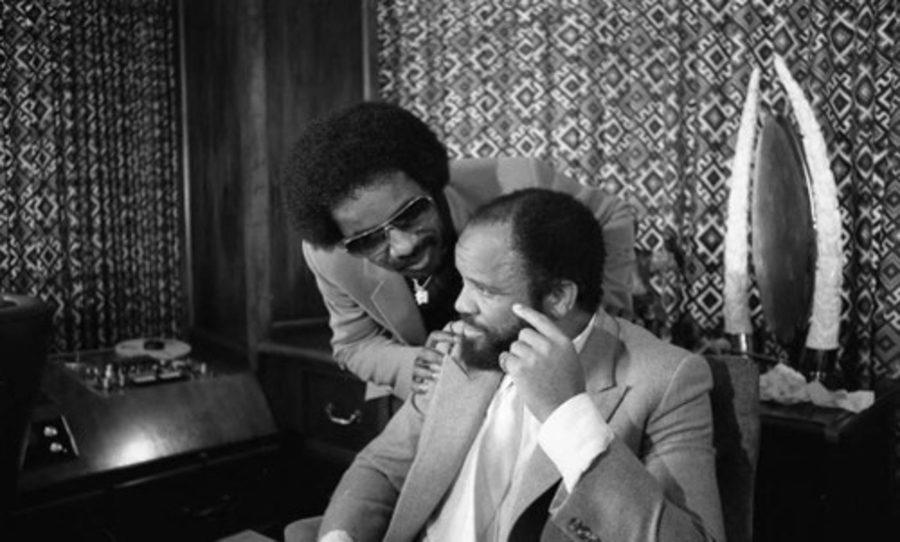Songs in the Key of Life is Stevie Wonder’s magnum opus. A testament to his visionary musical powers, it sealed his status as one of the world’s most significant artists.
You can dance with mum to Isn’t She Lovely. You can admire the jazz homage in Sir Duke. You can analyse the imagery in Village Ghetto Land. You cannot deny the power, resonance and timelessness of Stevie Wonder’s music. Stevie Wonder is the exuberant genius who revolutionised music, and we are not to underestimate the potency of his imagination.
In an extraordinary career, Songs in the Key of Life stands out. He visualised an untried musical path — a radical electrification of modern soul, that took him far from the assembly line pop of his ‘Little Stevie’ era during the early days of Motown. The record is ambitious but includes some of the best performances, arrangements, lyricism and production of Wonder’s career.

Little Stevie, the boy genius
Born Stevland Hardaway Judkins, the music genius was bestowed the nickname ‘Little Stevie Wonder’ by producer Clarence Paul at 11 years of age, which was when he was signed to Motown’s Tamala label. Wonder began his time at Motown covering Ray Charles songs, but it only took a year to release his first album Recorded Live: The 12 Year Old Genius.
As he grew older, Stevie Wonder shrugged off the ‘Little’, expanding his talents to songwriting and composing. He produced several hits between 1968 and 1970, including I Was Made to Love Her, For Once in My Life and My Cherie Amour. Signed, Sealed, Delivered I’m Yours was first self-produced song.
His supersonically joyous music exploded in the ’70s. He began experimenting with synthesizers in Tonto’s Expanding Head Band to create unique ‘groove’ sounds which were inspired by Earth, Wind & Fire. Stevie Wonder found himself defying Motown norms, especially because the label was accustomed to producing singles. His transitional and first serious album Where I’m Coming From (1971) was a brave departure from the Motown sound, which dipped into psychedelia, Baroque pop and folk-inflected soul.
Here, he found his sound.
Wonder created an unparalleled streak of hits that included Music of My Mind (1972), Talking Book (1972) Innervisions (1973) and Fulfillingness’ First Finale (1974). These albums were full-length artistic statements, with songs that flowed together thematically and explored social, political and mystical concepts, as well as romantic ones.
Innervisions won him three Grammys, including Album of the Year, and it ranked No. 34 on Rolling Stones 500 Greatest Albums of All Time. Wonder had cemented himself as the most acclaimed and influential musicians of the early ’70s.
On the 6th of August 1973, Wonder was in a car accident that nearly ended his life and left him comatose for four days. In an interview conducted several days after he regained consciousness, Wonder revealed the accident “made me aware of a lot of things that concern my life and my future, and what I have to do to reach another higher ground.”

The biggest deal in music history
This was, arguably, that higher ground.
At the tail end of 1974, aged just 24 Wonder was pervaded by a ‘quarter-life’ malaise. He had been a part of Motown records since age 11 and was now a self-assured adult, with a steady string of hits behind him. Wonder wished to quit the music industry to move to Ghana, to trade his standard Motown-issue mod suit for brightly coloured dashiki tunics.
In an interview with Rolling Stone, Wonder touched on his fascination with Ghana, where he believed his ancestral lineage could be traced. He expressed an acute desire to devote his energy and money to humanitarian causes, namely assisting disabled Ghanaian children. These notions began to solidify when Wonder announced a final concert tour in 1975, which was also the year his recording contract was set to expire.
To Motown Records board chairman Berry Gordy, the loss of Wonder was a terrifying thought.
Cynics believed the dramatic farewell tour was a ploy to put pressure on Motown for renegotiating his new contract — however, Wonder hardly needed the leverage. Rapidly changing music tastes and an economic depression meant Gordy’s empire had taken huge blows in the first half of the decade. This was not the time to lose their biggest talent to a life of philanthropy.
What resulted, was the biggest deal ever done in music history.
The negotiation process was described by Gordy in his memoirs as “the most gruelling and nerve-wracking” ever. By the end, Wonder had signed a seven-year contract that promised him north of $35 million (a lot of money for any time, an extraordinary amount back then), 20% royalties and control of his publishing.
He had complete creative freedom to work wherever he wanted, with whoever he wanted and — perhaps most impressively — Motown would require Wonder’s explicit permission if his singles were to be sold in future. According to Time magazine, this deal was more than Elton John and Neil Diamond’s contracts combined.
Elvis Presley, The Beatles or Frank Sinatra: none of them wielded that much influence on their own label. Not only was this the ultimate testament to Wonder’s status as Motown’s supreme talent, it was also a shining success story for African-American artists.
Wonder and Motown had a symbiotic relationship. In a statement announcing the deal, Wonder said:
“I’m staying at Motown because it is the only viable surviving black-owned company in the record industry. Motown represents hope and opportunity for new as well as established black performers and producers. If it were not for Motown, many of us just wouldn’t have had the shot we’ve had at success and fulfilment.”

“It is vital that people in our business – particularly the black creative community, including artists, writers, producers – make sure that Motown stays emotionally stable, spiritually strong and economically healthy.”
With these technicalities in place: his complete creative and financial freedom, a newfound source of inspiration from his Ghanian connections and a duty to support Motown and black artists through his work, Wonder immersed himself in a new project.
Songs in the Key of Life – Wonder’s masterpiece
Songs in the Key of Life (1976) is the sound of a creatively liberated young artist coming into his own. Of what has been dubbed Wonder’s ‘classic period’, nostalgic Stevie Wonder hit Songs in the Key of Life is the creme de la creme. It was a culmination of all that came before.
Songs in the Key of Life is a concentrated burst of music that epitomises a historic period of creativity. This energy is matched only by a handful of artists — think mid-’60s Bob Dylan, or ’80s Prince. Its ambition and scope were unprecedented: Wonder was determined to cover the breadth of life.

“He took his life experience and put them into Songs in the Key of Life,” Gordy revealed in Stevie Wonder: Songs in the Key of Life, a 1997 documentary “And it worked.”
Fiercely influenced by the discrimination he experienced in his own country, many of Wonder’s songs on the album lean heavily into social commentary.
Stevie Wonder Village Ghetto Land has a bite. It is a portrait of a nightmare urban wasteland set to a satirical Baroque synthesizer. The song offers a realistic depiction of life in America’s ghettos during a particularly low ebb for the country. It may not be a Dylan-esque indictment, song still does deliver an emotional punch, especially as Stevie Wonder simply asks “‘tell me, would you be happy in Village Ghetto Land?”
Pastime Paradise was built on a prototype polyphonic Yamaha synth, which Wonder dubbed the ‘Dream Machine’. For the time, it absolutely was a dream. Analog synths being pioneered by Moog were still in their infancy, but the new technology was revolutionary. While it’s easy to take synth tracks like Pastime Paradise for granted today — when it was released, this song was blowing listeners’ minds.
Pastime Paradise is about being trapped in a false nostalgia and refusing the face the harsh realities of the present. It warns of political manipulation, especially in the lyrics “glorifying days long gone behind/ they’ve been wasting most their days in remembrance of ignorance.”
While this song largely targets Southerners who look back fondly on the days of segregation, Wonder also examines the plight of those who accept poor living conditions for some future promise of salvation. This song would later inspire Coolio’s Gangsta’s Paradise.
Sir Duke is a big, brassy hit tribute to Duke Ellington and the pioneers of jazz. Wonder pays homage to jazz throughout the ages: from the jaunty 1930s hot jazz rhythm at the start, to the syncopated bass, brass, keyboard and guitar lines by the third hook of the song, which was influenced by Earth, Wind & Fire.
Sir Duke was intended by Wonder to be a celebration of those who have contributed to jazz in America regardless of ethnicity, gender or religion.
There are few songs that can make you feel as good as Isn’t She Lovely. And Wonder indulges us with a beloved tune that we never want to end. Wonder plays almost everything, from the tambourine to the infectious bassline which he performs on a synth. His improvisation on the harmonica is one of the best on record.
The lyrics of Isn’t She Lovely are gorgeously life-affirming, they celebrate the birth of his daughter Aisha, who now appears alongside him in performances.
Songs in the Key of Life has been cited as a favourite and core inspiration by artists such as Prince, Whitney Houston and Michael Jackson. In 2005, it was inducted into the National Recording Registry by the Library of Congress, which deemed it “culturally, historically or aesthetically significant”.
The album follows a recipe: tension, release, ecstasy. Because of this perfect combination, four and a half decades have failed to dull the album’s power and awe-inspiring scope.



